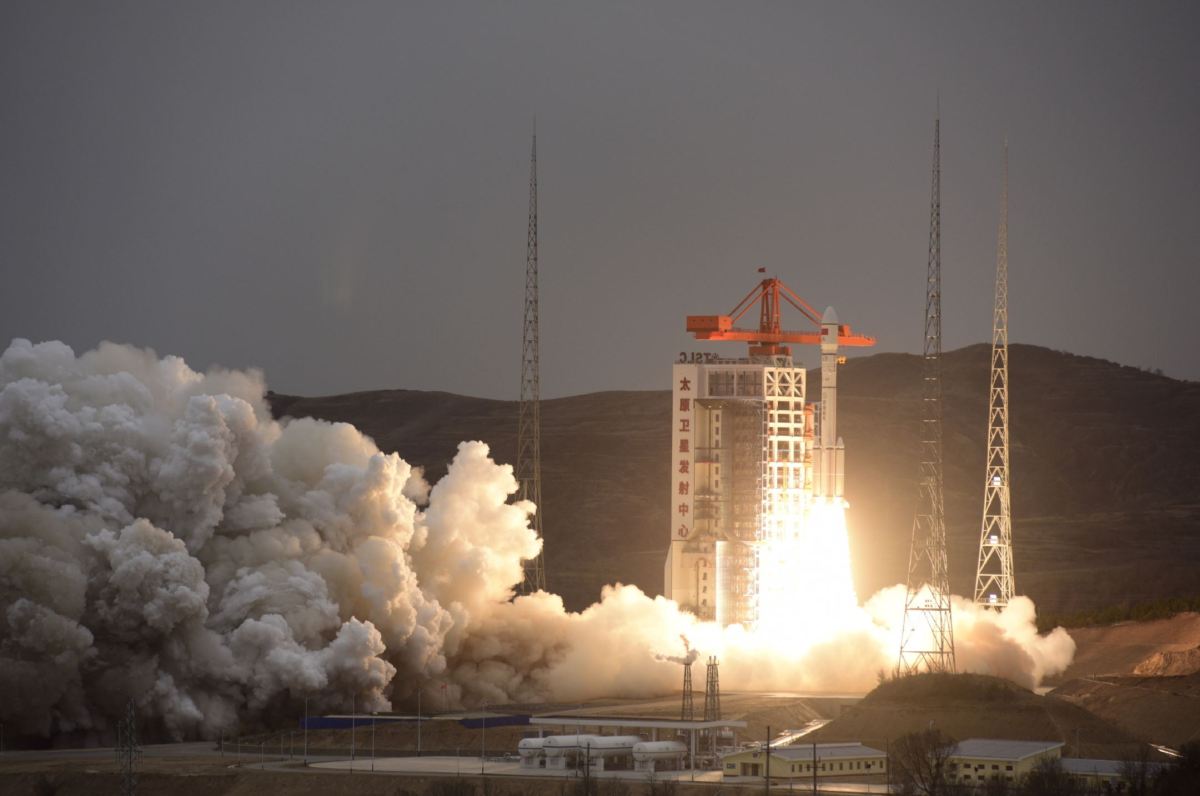HELSINKI — The first launch for China’s G60 Starlink megaconstellation of over 12,000 satellites is set for early August.
The first satellites are due to leave the factory in Shanghai for Taiyuan Satellite Launch Center in north China in the coming days, according to Shanghai Securities News.
The launch is set for Aug. 5 with the mission expected to carry 18 satellites. The launch vehicle was not stated in reports, but the Long March 6A would be the most capable option from Taiyuan in terms of capacity to low Earth orbit and payload fairing.
The constellation aims to provide global internet access, challenging U.S. projects including Starlink. It is also intended to secure finite orbital slots and frequencies and provide national internet coverage and data security.
The move is part of a national drive to foster commercial space development while boosting innovation and high-tech industry clusters. The initiative aims to boost China’s overall space capabilities.
Shanghai Spacecom Satellite Technology (SSST), the entity behind the G60 Starlink low Earth orbit megaconstellation, announced in February it had raised 6.7 billion yuan ($943 million) for the constellation’s construction.
SSST, together with the Innovation Academy for Microsatellites under the Chinese Academy of Sciences (IAMCAS), established Shanghai Gesi Aerospace Technology (Genesat) in 2022 to build satellite manufacturing facilities.
The first flat-panel satellite for G60 rolled off the assembly line at a digital satellite production factory in Shanghai’s Songjiang District in December 2023.
Earlier statements indicate that 108 satellites are planned for launch across 2024. This would suggest plans to launch five further batches of 18 satellites this year.
China has also approved another megaconstellation, named Guowang (SatNet). The China Satellite Network Group in 2021 to run the national 13,000-satellite project.
While a number of vaguely-termed test internet satellites have since been launched, the first large batch of Guowang satellites have yet to be launched. G60 Starlink therefore appears to be taking a somewhat surprise lead in its development.
Commercial space push
The plan is backed at several levels. Commercial space was last year noted as an “industry of the future.” It was subsequently noted as a priority in a government work report for the first time in March this year.
This drive is being manifested at city and provincial levels. Shanghai has developed its own commercial space action plan.
Goals include building generation medium and large launch vehicles and intelligent terminals. It also intends to strengthen the development of integrated communications, navigation and remote sensing satellite technologies. It aims to create a space information industry worth more than 200 billion yuan ($28.2 billion) by 2025. Beijing also has its own commercial space action with measurable goals.
On the launch side, a number of large and reusable rockets will soon be coming online to help build G60 Starlink and other constellations. The state-owned Shanghai Academy of Spaceflight Technology (SAST) conducted a 12-kilometer-altitude hop test this week for a reusable launcher it hopes to debut next year.
Meanwhile commercial outfit Space Pioneer aims to launch its Tianlong-3 launcher in the coming months. Competitor Landspace targets a first launch of its stainless steel Zhuque-3 next year.
Shanghai is also backing a medium Earth orbit communications project named Smart Skynet. The first pair of satellites launched from Xichang spaceport last month. That project could potentially be integrated with G60 Starlink or Guowang.
In a development, a Landspace subsidiary last month filed plans with the International Telecommunication Union for another 10,000-plus satellite megaconstellation.
